A biological interpretation of transient anomalous subdiffusion. I. Qualitative model
- PMID: 17142285
- PMCID: PMC1783867
- DOI: 10.1529/biophysj.106.092619
A biological interpretation of transient anomalous subdiffusion. I. Qualitative model
Abstract
Anomalous subdiffusion has been reported for two-dimensional diffusion in the plasma membrane and three-dimensional diffusion in the nucleus and cytoplasm. If a particle diffuses in a suitable infinite hierarchy of binding sites, diffusion is well known to be anomalous at all times. But if the hierarchy is finite, diffusion is anomalous at short times and normal at long times. For a prescribed set of binding sites, Monte Carlo calculations yield the anomalous diffusion exponent and the average time over which diffusion is anomalous. If even a single binding site is present, there is a very short, almost artifactual, period of anomalous subdiffusion, but a hierarchy of binding sites extends the anomalous regime considerably. As is well known, an essential requirement for anomalous subdiffusion due to binding is that the diffusing particle cannot be in thermal equilibrium with the binding sites; an equilibrated particle diffuses normally at all times. Anomalous subdiffusion due to barriers, however, still occurs at thermal equilibrium, and anomalous subdiffusion due to a combination of binding sites and barriers is reduced but not eliminated on equilibration. This physical model is translated directly into a plausible biological model testable by single-particle tracking.
Figures

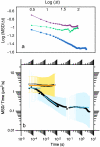

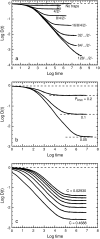

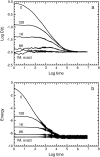

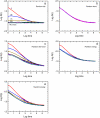
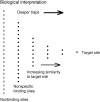
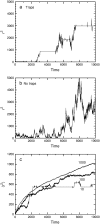
Comment in
-
Comment to the article by Michael J. Saxton: A biological interpretation of transient anomalous subdiffusion. I. qualitative model.Biophys J. 2008 Oct;95(7):3117-9; author reply 3120-2. doi: 10.1529/biophysj.108.136739. Epub 2008 Jul 11. Biophys J. 2008. PMID: 18621844 Free PMC article. No abstract available.
References
-
- Stauffer, D., and A. Aharony. 1992. Introduction to Percolation Theory, 2nd Ed. Taylor & Francis, London.
-
- Bouchaud, J. P., and A. Georges. 1990. Anomalous diffusion in disordered media. Statistical mechanisms, models and physical applications. Phys. Rep. 195:127–293.
-
- Platani, M., I. Goldberg, A. I. Lamond, and J. R. Swedlow. 2002. Cajal body dynamics and association with chromatin are ATP-dependent. Nat. Cell Biol. 4:502–508. - PubMed
Publication types
MeSH terms
Grants and funding
LinkOut - more resources
Full Text Sources
Other Literature Sources
Research Materials

